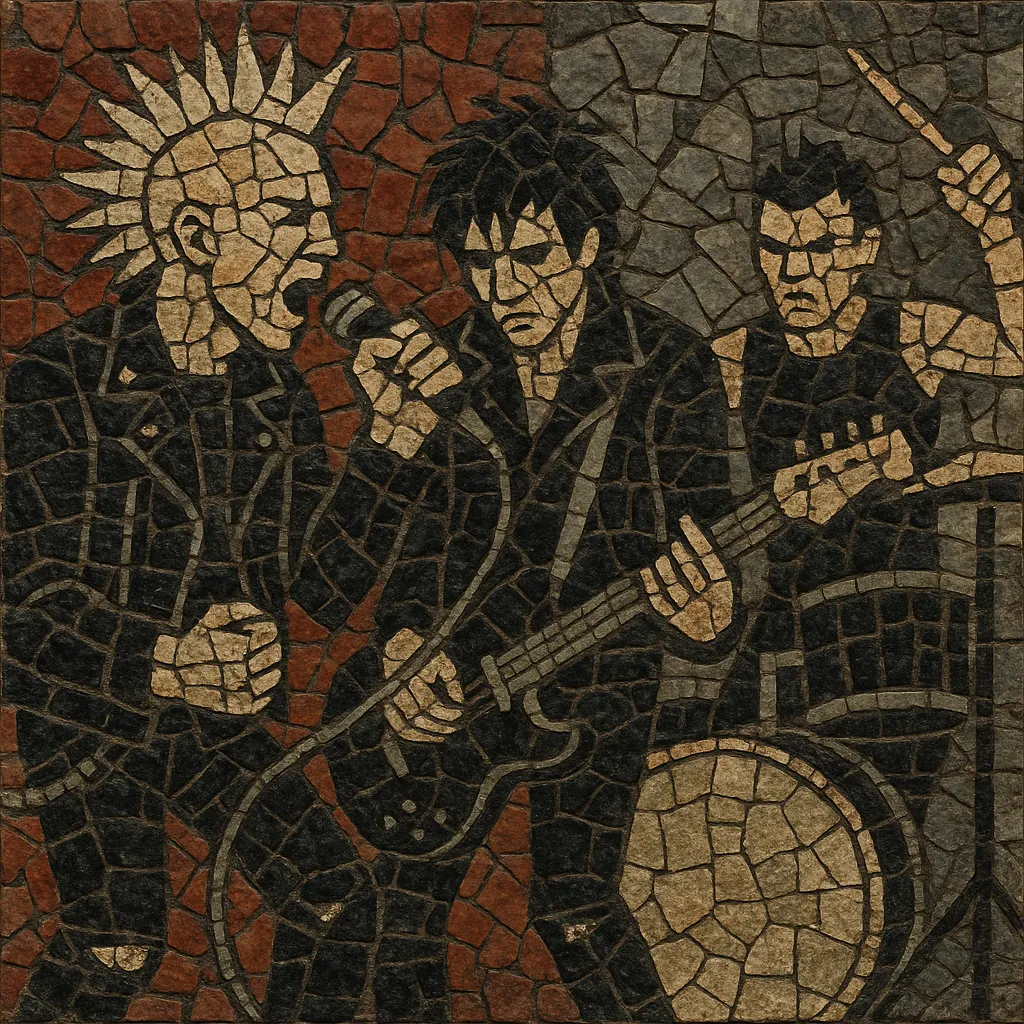UK82 is a fast, hard-edged wave of British punk that coalesced around 1980–1982, named after The Exploited’s song “UK 82.”
It tightened the raw immediacy of ’77 punk with higher tempos, barked vocals, gang-shout choruses, and a tougher rhythmic drive that often leaned on the emerging D‑beat.
Lyrically it is blunt, street-level, and confrontational—anti-war, anti-authority, and expressive of working-class anger in Thatcher-era Britain.
The sound is abrasive but direct: overdriven power‑chord guitars, pick-driven bass, 4/4 drums, and short, chantable hooks designed for live impact.
UK82 emerged in the UK as a second burst of punk energy under harsh social conditions—mass unemployment, inner‑city unrest, and the polarizing politics of the early Thatcher years. While first‑wave ’77 punk had opened the door, bands in 1980–82 pushed toward a louder, harder, and faster approach. The Exploited’s track “UK 82” gave the movement its nickname, capturing a feeling of urgency and renewed militancy.
Independent labels such as No Future Records, Riot City Records, Clay Records, and Secret Records documented the scene. The sound emphasized speed and impact: clipped, driving drum patterns (often veering toward the proto‑D‑beat), chainsaw‑bright guitars, and gang choruses. Key releases include Discharge’s “Why?” EP (1981) and “Hear Nothing See Nothing Say Nothing” (1982), The Exploited’s “Punk’s Not Dead” (1981) and “Troops of Tomorrow” (1982), GBH’s “City Baby Attacked by Rats” (1982), and Vice Squad’s “No Cause for Concern” (1981). These records crystallized the style’s sonic vocabulary and lyrical preoccupations—war, policing, youth alienation, and social decay.
UK82 overlapped with Oi! and anarcho‑punk while accelerating toward a rawer hardcore momentum. Discharge’s drum feel became the blueprint for D‑beat, while the gritty tonality and blunt political stance fed directly into crust punk and, by extension, stenchcore. The speed and aggression also inspired thrashcore and influenced the earliest currents of grindcore and extreme metal internationally. Scandinavian scenes (e.g., Swedish kängpunk) picked up the Discharge template, and UK82 aesthetics echoed through later street‑punk revivals.
By the mid‑1980s several UK82 bands steered into crossover or metallic edges, while others remained defiantly punk. The style’s DNA—breakneck beats, call‑and‑response chants, and anti‑authoritarian urgency—has persisted in street punk and crust scenes, with periodic revivals and enduring influence on global hardcore and extreme punk.
Use a classic punk lineup: two overdriven electric guitars, bass (preferably pick‑played), and a hard‑hitting drum kit. Aim for 4/4 at 180–220 BPM. Lean into the D‑beat or a skank beat variant: alternating kick and snare with driving eighths on open hi‑hat or ride to create relentless forward motion.
Build songs from terse power‑chord riffs (I–bVII–IV and similar modal moves are common). Keep progressions simple and repeatable; focus on rhythmic punch and sharp stops. Write compact verse–chorus arrangements of 1–3 minutes. Insert gang‑shout refrains that are easy to chant live, and use brief, noisy guitar breaks over the root rather than elaborate solos.
Dial in bright, gritty distortion (classic pedal choices like a RAT or hard clipping overdrive), a mid‑forward bass tone, and dry, aggressive drum sounds. Vocals should be shouted or barked with tight phrasing; layer gang responses for hooks. Write direct, slogan‑ready lyrics about anti‑war themes, police/state power, unemployment, and street‑level frustrations—avoid metaphor-heavy language in favor of blunt statements.
Track live or with minimal overdubs to preserve urgency. Keep mixes punchy and uncluttered; prioritize snare crack, vocal presence, and guitar attack. On stage, project intensity with tight tempos, abrupt stops, and crowd‑shout moments—energy and conviction matter more than technical polish.


